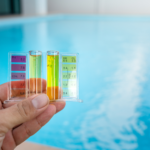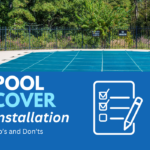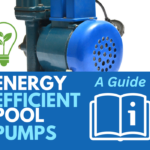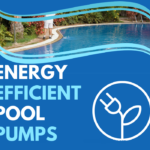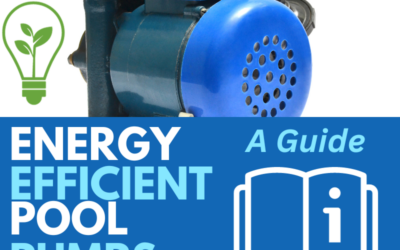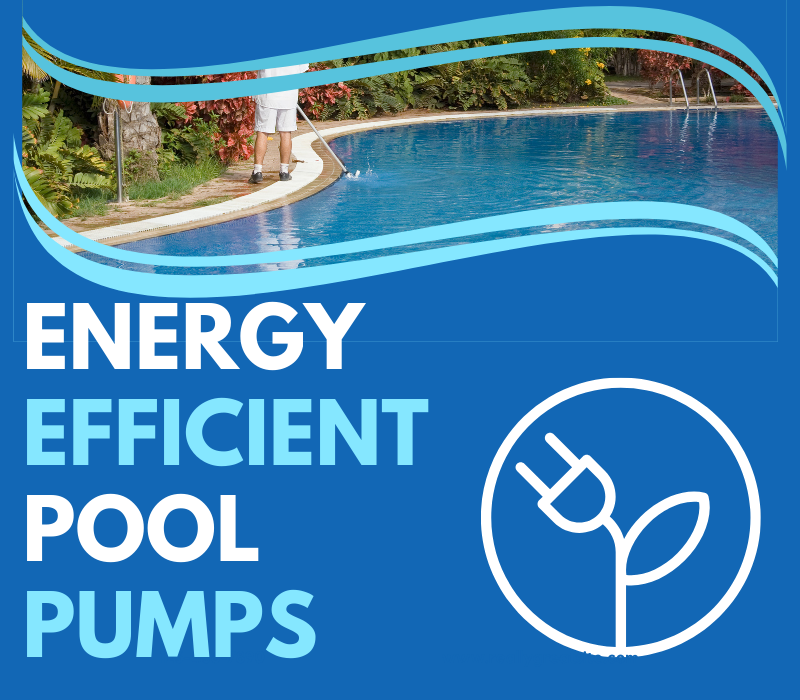
Energy-efficient pool pumps are revolutionizing the way we maintain our swimming pools, offering a greener, more cost-effective solution. As a homeowner or pool service provider, understanding these innovative devices can help you reap significant benefits. This article will answer frequently asked questions about energy-efficient pool pumps, providing insights into their working mechanism, benefits, costs, and maintenance. We’ll also delve into problem-solving techniques and guide you on selecting the right pump for your pool. Whether you’re considering a transition to energy-efficient pumps or looking to optimize your current setup, this comprehensive guide is for you.
Understanding Energy Efficient Pool Pumps
In the quest for energy conservation, swimming pools are no exception. A key player in this energy-saving endeavor is the energy efficient pool pump. This section aims to shed light on these innovative devices, explaining their operation and the benefits they bring to the table. Let’s dive into the world of energy efficient pool pumps, a crucial step towards both cost reduction and environmental preservation.
What is an Energy Efficient Pool Pump?
An energy efficient pool pump is a cutting-edge device designed to circulate water through your pool’s filtration system with less energy consumption than conventional pool pumps. It’s all about optimizing power usage with variable speeds, leading to substantial energy savings. These pumps gain their efficiency through the inclusion of state-of-the-art features such as variable or dual-speed motors.
At their core, these pumps operate on the concept of customizing pump activity to suit specific requirements, rather than running at maximum power constantly. This approach makes water circulation and filtration processes more efficient, leading to a significant decrease in energy costs and a beneficial impact on our environment.
Working Mechanism of Energy Efficient Pool Pumps
Energy efficient pool pumps revolutionize the way pools function by dynamically adjusting the flow rate to match the pool’s needs. In contrast to traditional pool pumps that run at a fixed speed, these advanced pumps employ either variable or dual-speed motors. This customization allows the pump to adapt its operations to specific tasks, thereby minimizing energy usage.
There are three primary categories of energy efficient pumps: single-speed, dual-speed, and variable-speed. Single-speed pumps maintain a steady speed, while dual-speed pumps offer a high setting for power-intensive tasks like vacuuming and a low setting for basic filtration. The most energy-efficient of the three, variable-speed pumps, can be set to any speed.
These pumps are designed with a permanent magnet motor, akin to those found in electric vehicles, instead of the standard induction motor. This unique design element minimizes heat generation, a common cause of energy loss, thereby boosting the pump’s overall efficiency.
The digital control interface of these pumps is programmable, allowing pool owners to adjust the speed settings for various operations, from filtration and cleaning to heating and water features. By operating at the precise speed needed for each task, the pump consumes only the necessary energy, resulting in significant reductions in energy costs.
Key Benefits of Using an Energy Efficient Pool Pump
- Remarkable Energy Savings: Energy efficient pool pumps, by adjusting their speed to match the task at hand, minimize energy usage. This efficiency can translate into substantial energy savings over time, lowering your utility bills and promoting environmental sustainability.
- Enhanced Filtration: These pumps offer superior filtration by allowing water to pass through the filters at a slower rate. This slower flow enables the filter to trap more debris, resulting in cleaner, clearer water in your pool.
- Quiet Operation: Energy efficient pool pumps operate with less noise than traditional pumps, particularly at lower speeds. This quiet operation significantly reduces noise pollution, creating a more serene poolside environment.
- Increased Lifespan and Durability: Energy efficient pool pumps generate less heat due to reduced friction from slower speeds, making them less susceptible to wear and tear. This durability extends their lifespan, meaning fewer replacements and lower long-term costs.
- Versatility: The programmable nature of these pumps makes them incredibly versatile. They can adapt to a range of activities, from heating to cleaning, by adjusting the speed settings.
- Decreased Chemical Usage: Improved filtration reduces the need for chemicals to maintain the pool, leading to significant cost savings over time. Moreover, a reduced reliance on chemicals makes your pool more eco-friendly and healthier for swimmers.
Transitioning to Energy Efficient Pool Pumps
The shift from a conventional pool pump to an energy-efficient model is a strategic decision that can lead to substantial energy and cost savings while enhancing your pool’s overall cleanliness and performance. This transition is not just about replacing one pump with another; it requires a comprehensive understanding of various aspects. These include the initial and ongoing costs, the installation and maintenance procedures, and a grasp of energy efficiency ratings. Additionally, factors such as your pool’s size and type play a significant role. By carefully considering these elements, you can maximize your energy conservation efforts and ensure a rewarding return on your investment. The upcoming sections will delve deeper into these crucial aspects of transitioning to energy-efficient pool pumps.
Initial and Long-Term Costs
While the upfront cost of an energy-efficient pool pump might appear steep compared to a traditional pump, it’s essential to consider the bigger financial picture.
For instance, variable-speed energy-efficient pool pumps can initially cost up to three times more than their single-speed counterparts. However, they can potentially slash your energy bill by as much as 90%. This means that the initial investment can be recovered within one to two years through substantial energy savings.
Moreover, the long-term maintenance costs for energy-efficient pool pumps tend to be lower. These pumps generate less heat and friction, which results in less wear and tear. This reduction in operational stress not only decreases maintenance expenses but also prolongs the pump’s lifespan, thereby minimizing replacement costs.
Another cost-saving aspect of energy-efficient pool pumps is their impact on chemical usage. These pumps circulate water more effectively, leading to improved filtration. Consequently, the quantity of chemicals needed to maintain pool cleanliness is reduced, leading to further savings.
In essence, while the upfront cost of energy-efficient pool pumps may be higher, the total lifetime cost of ownership is likely to be significantly lower. Therefore, it’s crucial to consider both the initial and long-term costs to fully understand the financial advantages offered by these high-efficiency pumps.
Installation and Maintenance of Energy Efficient Pool Pumps
When it comes to installing an energy-efficient pool pump, there’s more to it than meets the eye. The process involves a careful assessment of various elements, including your pool’s size and type, the length of the piping, and the filter system. To ensure optimal performance and maximum energy savings, it’s advisable to engage the services of a professional installer.
The installation process also involves configuring the pump speeds accurately for different tasks. For instance, running the pump at a lower speed for everyday circulation and higher speeds for more intensive tasks like backwashing can help you reap the benefits of energy savings.
Maintenance plays a crucial role in the lifespan and efficiency of your pump. Regular inspections for signs of wear and tear, cleaning the strainer basket, maintaining an adequate water level, and checking for leaks are simple yet effective steps to extend the life of your pump.
Moreover, even with an energy-efficient pump, covering the pool when not in use can reduce debris and lessen the need for filtering and chemical treatments. Scheduling your pump’s operation during off-peak hours can also help you benefit from lower electricity rates.
Despite their durability, energy-efficient pumps can sometimes experience issues. In such cases, promptly contacting a professional for troubleshooting and repairs is essential to maintain the pump’s energy efficiency and longevity.
Problem-Solving with Energy Efficient Pool Pumps
Like any piece of equipment, energy-efficient pool pumps are not immune to occasional hiccups. Being knowledgeable about common issues can facilitate quick and efficient problem-solving, allowing your system to regain its optimal functionality in no time. In this section, we’ll delve into techniques for identifying problems and strategies for resolving common issues associated with energy-efficient pool pumps.
We’ll also discuss when it’s best to call in a professional for repair or maintenance services. So, stay with us as we guide you through the ins and outs of maintaining your pump for an energy-efficient and well-kept pool.
Identifying Common Problems
In the world of energy-efficient pool pumps, early problem detection is a game-changer. It’s essential to familiarize yourself with the potential issues that may arise. Let’s delve into some of the common problems you might encounter:
Decreased Water Flow: A noticeable reduction in the water’s flow rate is a clear sign of trouble. This could stem from a variety of issues, such as the pump not operating at full speed, a clogged or dirty filter, or even a blockage in the piping system.
Unusual Noises: Energy-efficient pumps are known for their quiet operation. If you start hearing strange noises, it could be a sign of worn bearings or a failing motor.
Water Leakage: If you spot leaks near the pump or filter, this could be a warning sign of a faulty seal or a crack in the pump housing.
Rising Energy Bills: An unexpected increase in your energy bills without a corresponding change in usage could indicate that the pump is not operating at peak efficiency. This could be due to a worn-out impeller, incorrect settings, or the pump being ill-suited for your pool’s size.
Pump Fails to Start: If your pump doesn’t start, it could be an issue with the electrical supply, the motor, or the control system.
Resolving Issues and When to Contact a Professional
Knowing when to roll up your sleeves and when to call in the experts is key to maintaining your energy-efficient pool pump. Here’s a quick guide:
Decreased Water Flow: Start by inspecting the filter, skimmer, and pump basket for debris. If these components are clean and the flow rate remains low, it’s time to call in a professional to check for pipe blockages or pump malfunctions.
Unusual Noises: If your pump starts to sound louder or produces a rattling noise, a professional inspection may be necessary to identify potential issues with the bearings or motor.
Water Leakage: Leaks near the pump often indicate a seal replacement is required. While simple seal replacements can be a DIY task, more extensive cracks may necessitate professional intervention.
Rising Energy Bills: A sudden spike in energy bills calls for a professional to inspect the pump for faulty impellers, incorrect settings, or sizing issues.
Pump Fails to Start: This could be a sign of an electrical or motor issue, and a trained technician should be called in to diagnose and resolve the problem.
Regular maintenance checks by professionals can help prevent some of these issues. These experts are trained to spot early signs of trouble, and their timely intervention can ward off larger problems in the future. A balanced approach of routine self-maintenance and periodic professional inspections is the key to keeping your energy-efficient pool pump in top-notch condition.
Selecting the Right Energy Efficient Pool Pump
Embarking on the journey to energy efficiency with your pool pump is a laudable step. However, the journey doesn’t stop there. The pump you choose can significantly impact your energy savings and pump performance. In this section, we’ll explore the critical factors that should guide your choice of an energy efficient pool pump. We’ll delve into how your pool’s size and type can influence your decision and demystify energy efficiency ratings. By the end of this discussion, you’ll be equipped with the knowledge to choose a pool pump that aligns perfectly with your needs.
Factors to Consider: Pool Size and Type
The selection of an energy efficient pool pump hinges on several key factors, with the size and type of your pool being fundamental. The pump’s horsepower should align with your pool’s volume and filtration requirements.
- Pool Size: As a rule of thumb, larger pools demand more powerful pumps. If your pump is too small or inefficient, it may struggle to circulate and filter the water effectively, resulting in poor water quality and increased energy usage. Conversely, an oversized pump can lead to unnecessary energy consumption and costs. Accurate measurement of your pool size is crucial to select a pump that’s just right.
- Pool Type: In-ground pools typically have the pump and filter situated below the water level, necessitating a pump powerful enough to counteract gravity.
- Filtering Needs: If your pool is frequently littered with leaves, grass, or other debris, a pump with higher horsepower may be necessary for efficient filtration.
- Piping Length: The length and diameter of your pool’s plumbing system can also affect the pump’s power requirements. Longer pipe runs or smaller diameters demand more force to move water, requiring a more powerful pump.
By carefully considering these factors, you can select an energy efficient pump that is tailor-made for your specific pool size and type, ensuring optimal energy savings and performance.
Deciphering Energy Efficiency Ratings
When it comes to energy efficiency ratings for pool pumps, these numbers serve as a guide to how much energy the pump requires to function optimally. A higher rating signifies a more energy-efficient pump.
Motor Efficiency: Pumps equipped with energy-efficient or premium-efficiency motors are a wise choice. These motors are specifically engineered to minimize energy wastage and subsequently, reduce your energy expenses. For instance, a pump with a premium-efficiency motor might consume 30% less energy than a standard one, leading to significant savings over time.
Variable Speed: While variable-speed pumps may seem pricier initially, they offer substantial energy savings in the long haul. The beauty of these pumps lies in their ability to modify their speed according to the task, thereby optimizing energy usage. Imagine a pump that runs at full speed when cleaning the pool, but slows down for simple filtration tasks – that’s the advantage of variable speed.
Energy Factor (EF): This rating measures the pump’s efficiency in circulating water per unit of power consumed. A larger EF value signifies superior energy efficiency. Think of it as a car’s miles per gallon (MPG) – a higher MPG means more distance covered with less fuel, similarly, a higher EF means more water circulated with less power.
Energy Star Certification: Pool pumps with ENERGY STAR certification consume up to 70% less energy than standard models. This certification indicates that the pump has met the strict energy efficiency criteria set by the Environmental Protection Agency (EPA). It’s like a seal of approval for energy conservation.
Taking the time to comprehend these ratings can guide you in making an informed decision about your pool pump’s projected energy use and potential savings. Therefore, it’s crucial to delve into the energy efficiency ratings of your prospective pool pump, as it can significantly influence your energy usage and yearly energy costs.
1. What is an energy efficient pool pump?
An energy efficient pool pump adapts its operation according to the pool’s needs, therefore, consuming less electricity. By regulating flow rates, these pumps provide essential energy savings.
2. How does an energy efficient pool pump work?
Energy efficient pool pumps operate on variable speeds. These pumps adjust their speed according to the task, allowing for better energy management and reducing power consumption.
3. What are the benefits of an energy efficient pool pump?
One may observe cost reductions, noise reduction, longer equipment life, and less environmental impact when using an energy-efficient pool pump. Furthermore, these pumps offer improved filtration and water clarity.
4. How do energy efficient pool pumps impact utility bills?
Energy-efficient pool pumps can reduce energy costs by up to 80%. By managing water circulation more efficiently and consuming less power, these pumps bring down utility bills significantly.
5. Are energy efficient pool pumps more expensive to install?
Though energy-efficient pool pumps might require a higher initial investment compared to standard pool pumps, the significant savings on energy costs over time offset this initial expense.
6. How long does an energy efficient pool pump last?
The life expectancy of an energy efficient pool pump greatly depends on the model and usage but generally, these pumps can last anywhere from 8 to 12 years. Proper maintenance enhances the pump’s longevity.

